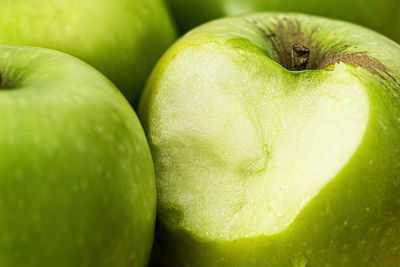Harvesting Apples: Pick your Own Apple This Year

Harvesting apples is a favorite fall tradition for many Americans. Fresh apples for cider, pies, caramel apples, and more are in high demand this time of year. We have roughly 90 varieties of apples available today in North America – among their most popular are Red Delicious, Golden Delicious, and Granny Smith. Some statistics indicate that the average American consumes 16 pounds of apples each year and every autumn, thousands of Americans flock to local apple orchards to gather their own bushels of America’s favorite fruit.
Picking Apples
While each variety of apple differs in their growing time, apples that are firm with an even color are generally ready for harvest. The color of the variety will indicate its maturation.
For example, a Red Delicious apple will have a rich, red hue as well as a firm skin when it is fully ripened.
Golden Delicious or Granny Smith apples should display their signature shades of yellow or green when they are ready to be plucked from the tree.
Despite old wives’ tales indicating otherwise, seed color is not a reliable way to check for fruit maturation in apples.
While in the past it was assumed that brown seeds meant harvest time, seeds can actually start to turn brown several weeks before the apples are ready to be picked.
Apples harvested before they reach maturation will usually be sour and often inedible.

On the other hand, leaving apples on the tree for too long makes them soft and can affect their sweetness. If an early season frost arrives unexpectedly, wait until the freeze thaws before harvesting.
Apples do not freeze until they reach 27 degrees Fahrenheit, so unless the temperatures have plummeted below 23 degrees for an extended period of time, the apples will most likely be unaffected.
Remember, apples that have experienced a freeze have a shorter storage life, so be sure to use them as quickly as possible.

The Apple Picking Guide
Harvesting apples is a great activity for kids and adults alike. Whether picking apples from a tree in the backyard or visiting a pick-your-own orchard, keep these guidelines in mind.
- Leave the stem. It is important to try to keep the apples stem intact when plucking it from the tree. Stem length is directly related to the length of freshness for the fruit.
- Check for disease. After the apples have been harvested, go through and toss any fruit with insect damage such as worm holes. Check for signs for diseases, as well, such as apple scab, black rot, or fly speck. Removing the bad apples is a crucial step to storing a healthy harvest. The old adage, “One bad apple spoils the barrel” is right. Apples release ethylene gas to help them ripen. Diseased or damaged apples emit ethylene gas more rapidly, causing other apples in close proximity to spoil.
- Store smart. Make sure apples are stored in an area with 90 to 95 percent humidity. Consider a cool cellar or basement to keep the apples fresh. They can also be canned or frozen for a variety of delicious pies or preserves for up to one year.
Apple Picking Season
Throughout the country, harvest time for different varieties of apples can arrive in early September on up to late November. Factors such as the type of fruit, the planting time, and the local weather from planting to harvest will affect when apples are ready to be plucked from their branches.
We haven’t covered harvesting apples in our “Top 5 Things to Do in your Garden this Fall” guide but you may find some other good ideas there.

Late frost in the spring can rob an apple tree of its fruit altogether, while an early frost in the fall can affect harvest times once they have thawed.
Growing a few apple trees in the yard, or designating part of a garden spot for an orchard may be a good idea to consider for those who love enjoying fresh apples in the fall.
Pick Your Own Apples
If growing apples in your garden is not an option, there are thousands of pick your own apple orchards in the U.S. which allow consumers to pay an entrance fee and keep the apples they harvest from the trees themselves.
Remember, apple maturation times are directly related to local weather and a few days can make a big difference. Be sure to check 1 to 2 weeks ahead of time to get a better idea about when to pick apples at a specific location. Pickyourown.org has a comprehensive list of pick-your-own apple orchards open for business in each state.
Conclusion
Harvesting apples is a great way to guarantee fresh ingredients for those popular autumn apple recipes or for a nutritious snack. Knowing the signs of a ripe apple and getting to those orchards in time will make all the difference in a healthy harvest. Keep these tips in mind and get to picking!
